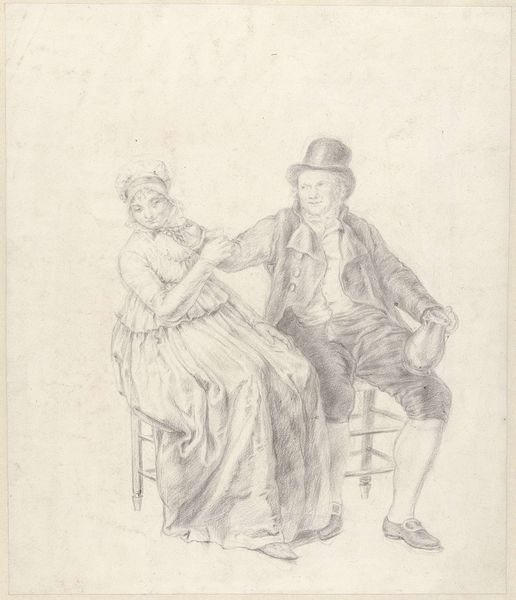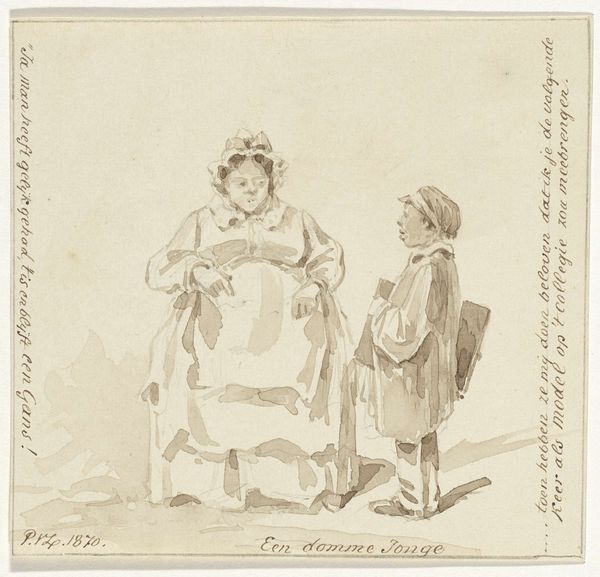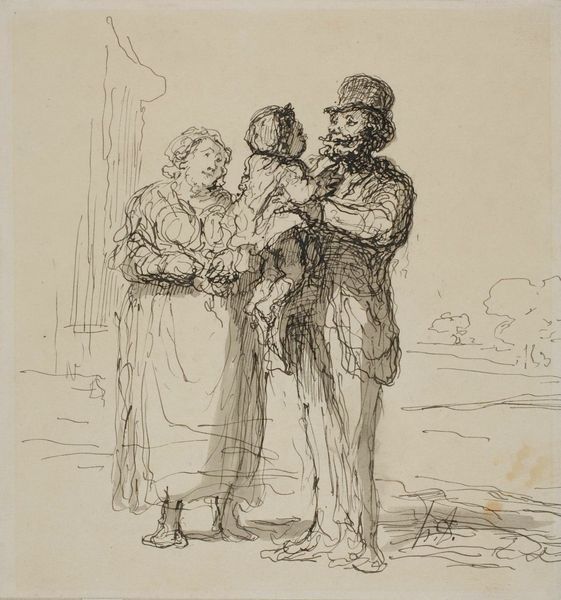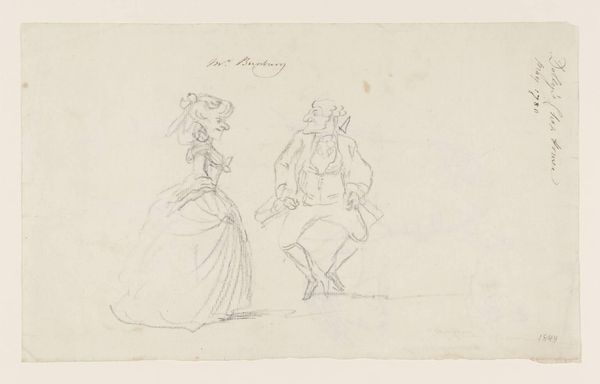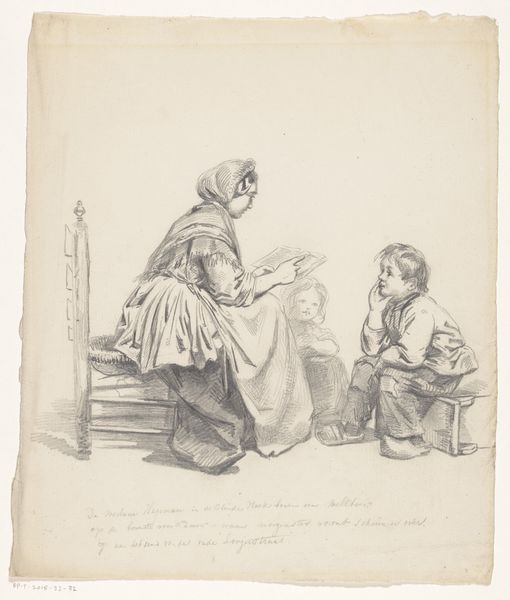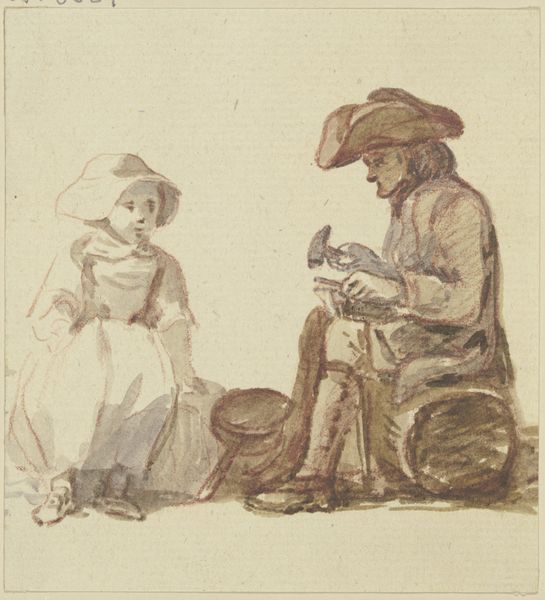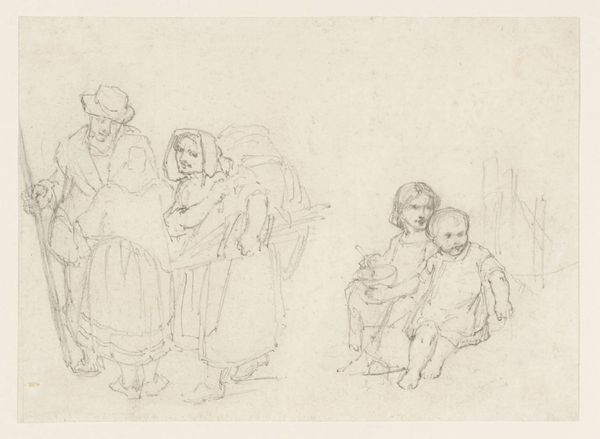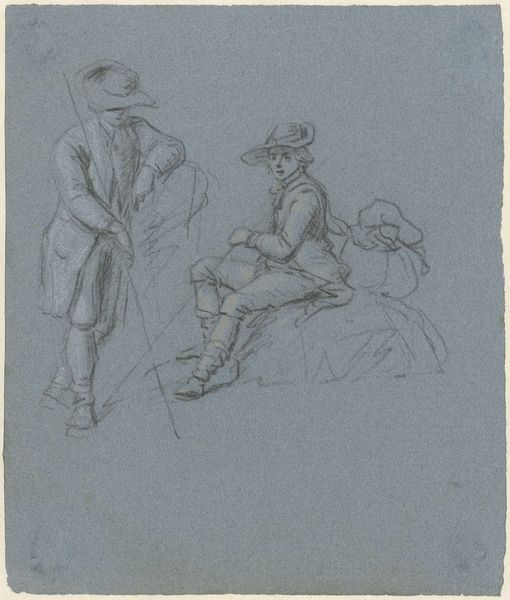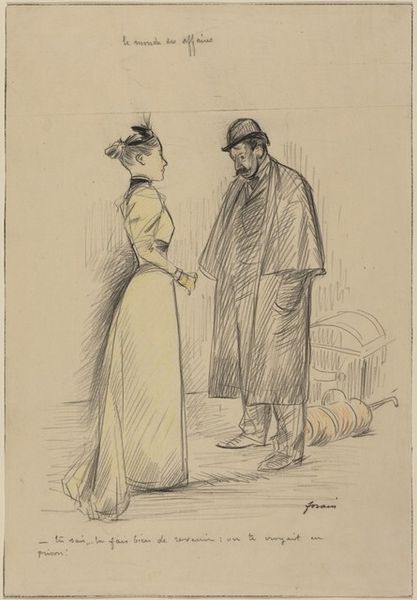
drawing, pencil
#
portrait
#
drawing
#
figuration
#
pencil drawing
#
romanticism
#
pencil
#
genre-painting
Copyright: Public Domain: Artvee
Editor: Adolph Tidemand’s pencil drawing, "Barbent gutt og strikkende kvinne, Subiaco," made in 1841, captures a barefoot boy and a knitting woman. It feels like a glimpse into the daily lives of people in a specific time and place. What societal stories do you think this piece whispers about, given its focus on what appears to be a quiet, domestic scene? Curator: The social history embedded within this seemingly simple genre scene is fascinating. Tidemand, a Norwegian artist, often depicted scenes of rural life, aiming to capture authentic representations of "the people". But consider, who are "the people" in this context? Are these portraits, or types meant to convey particular cultural ideals? Think about how these images might have been received by an urban, possibly nationalistic, audience seeking an idealized vision of rural life. Editor: That's a great point. It challenges the idea of it simply being a neutral observation. Could it be shaping a particular narrative? The woman’s act of knitting; does that symbolize something broader? Curator: Precisely! Knitting was often associated with virtue, domesticity, and female productivity, conforming to certain social expectations. The boy's bare feet suggest a different kind of labour, a closeness to the land. This portrayal reinforces certain stereotypes, but also offers insight into the lived realities of these individuals within their specific societal roles. How might the representation of poverty, if there is any, play into this? Editor: That's a perspective I hadn't fully considered. So, it's not just what’s depicted, but also how it reinforces, or perhaps challenges, existing social narratives of the time. Curator: Exactly. And that is where the power of art, even a seemingly quiet pencil drawing, truly resides: in its ability to shape, reflect, and challenge the dominant ideologies of its era. It encourages us to question not just what we see, but why we see it that way. Editor: Thank you, this piece now tells a story that goes way beyond the simple scene that's initially visible. It definitely adds more layers of depth to Tidemand’s work.
Comments
No comments
Be the first to comment and join the conversation on the ultimate creative platform.
